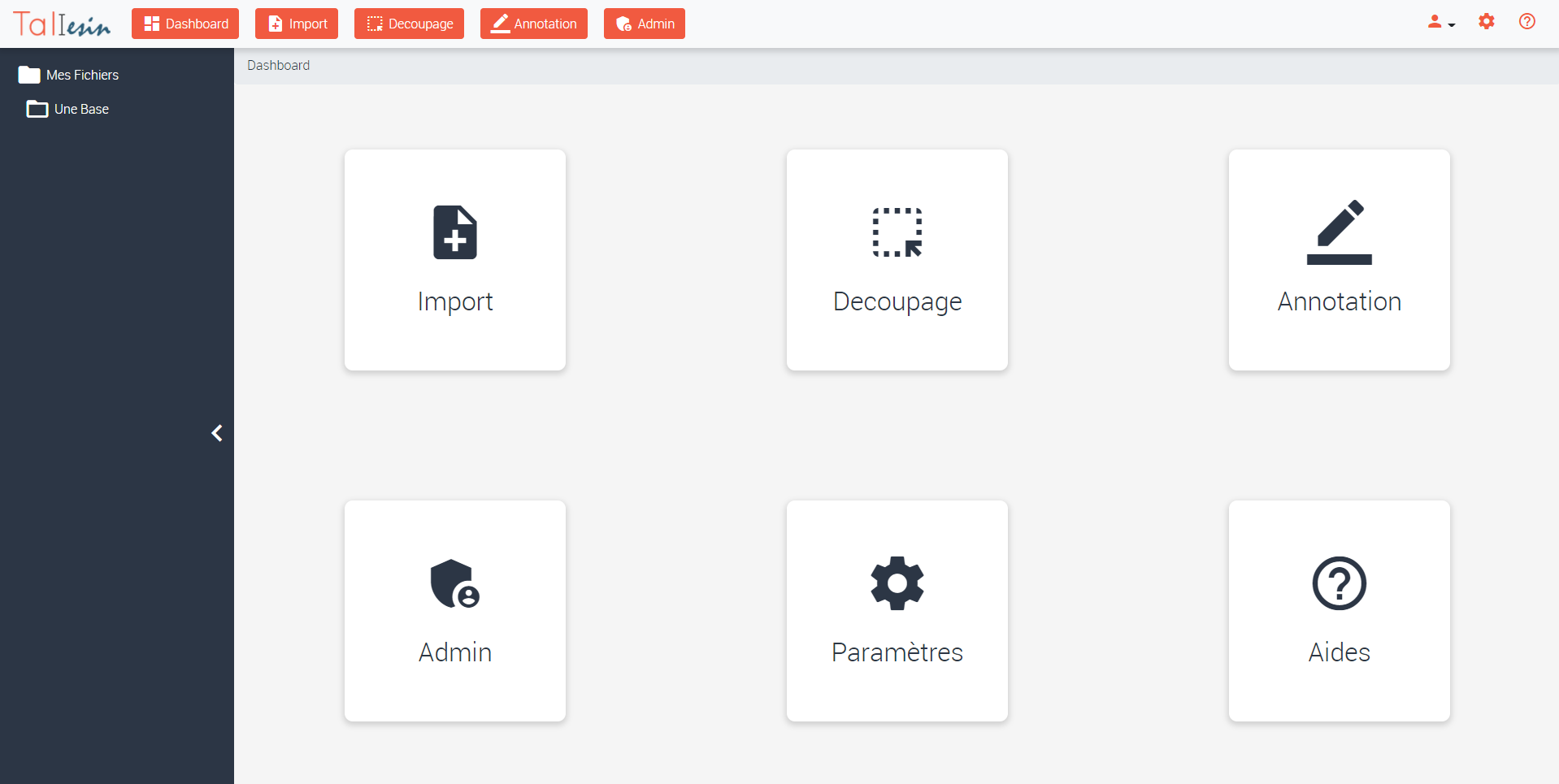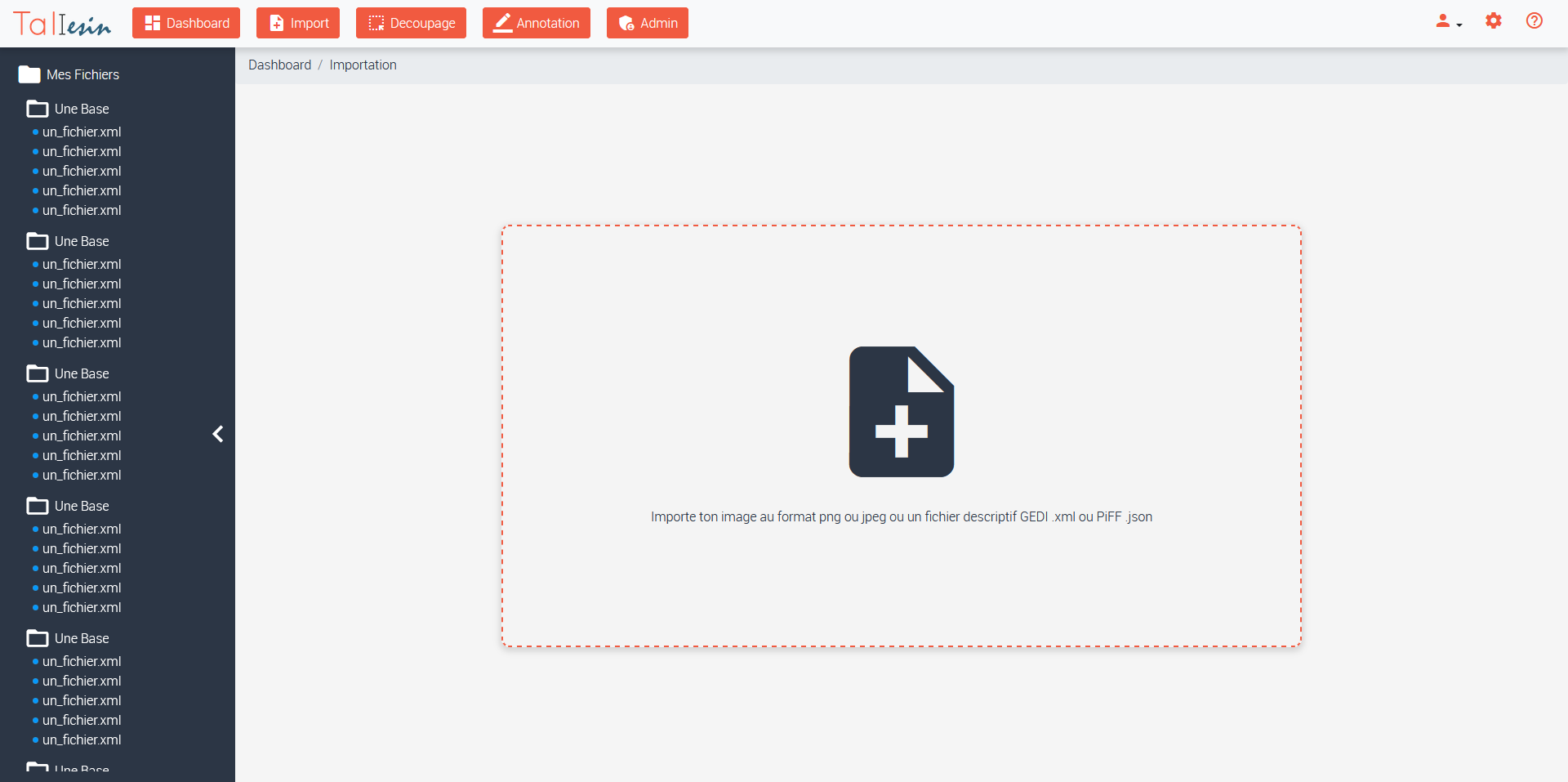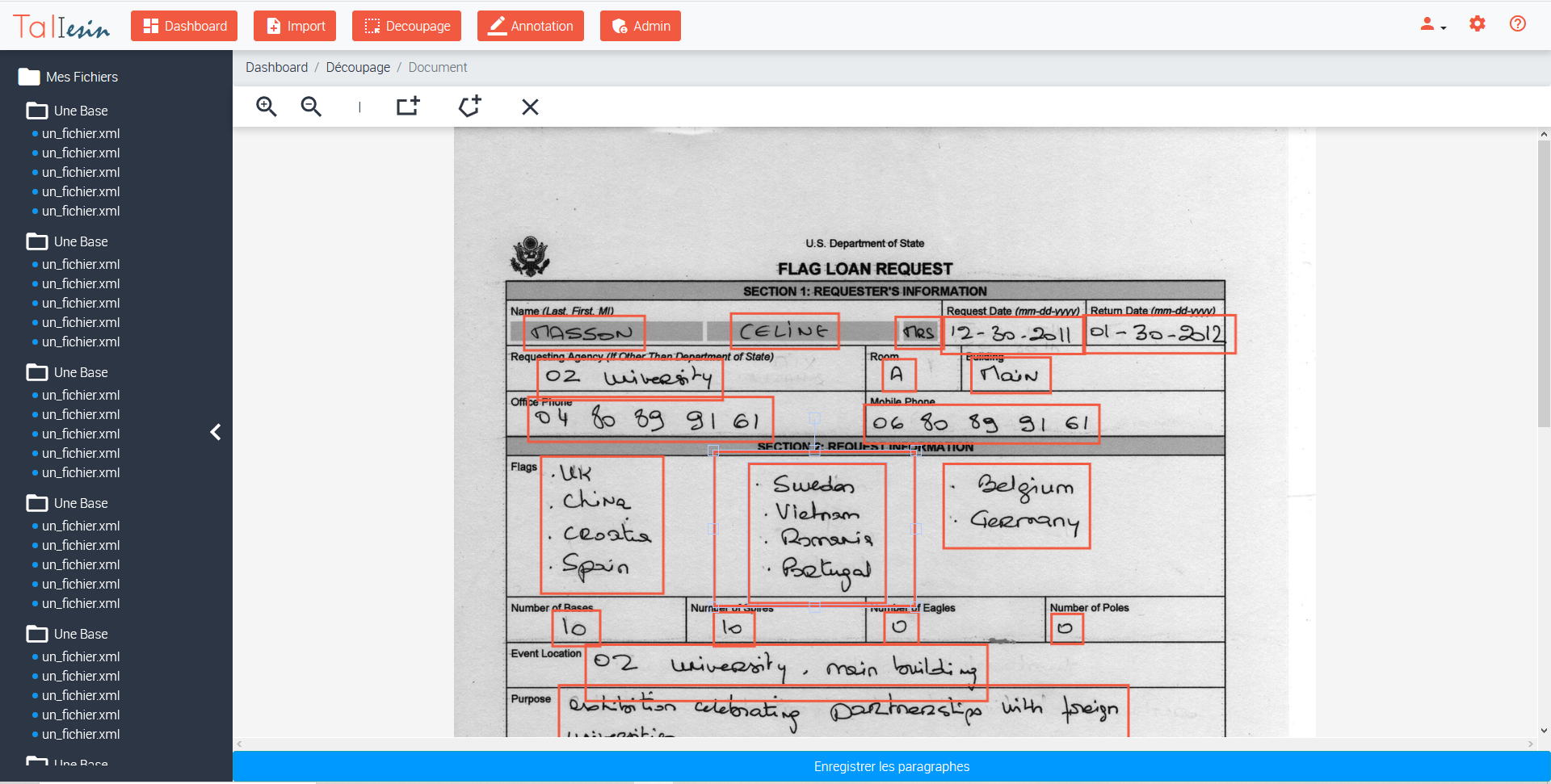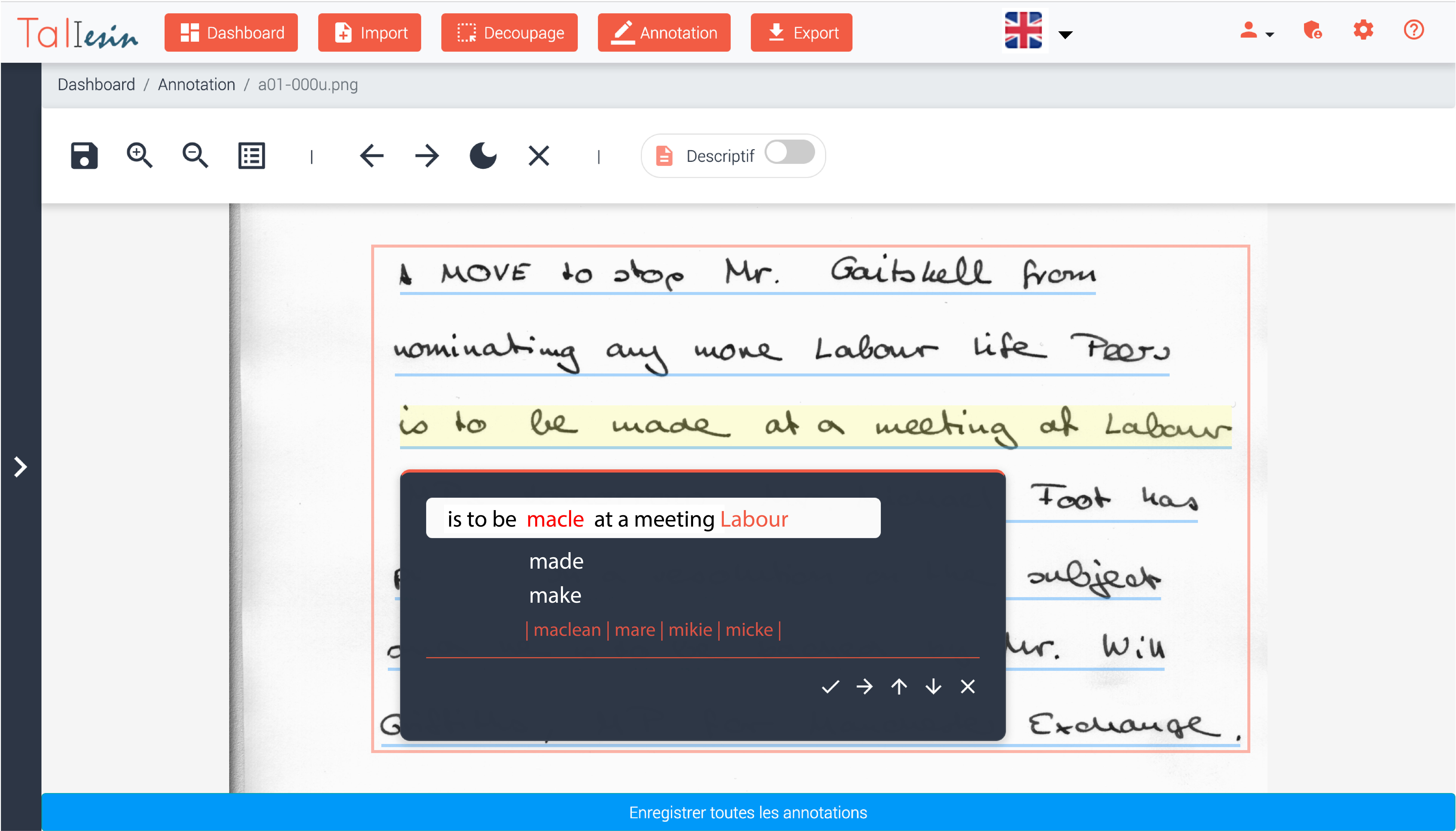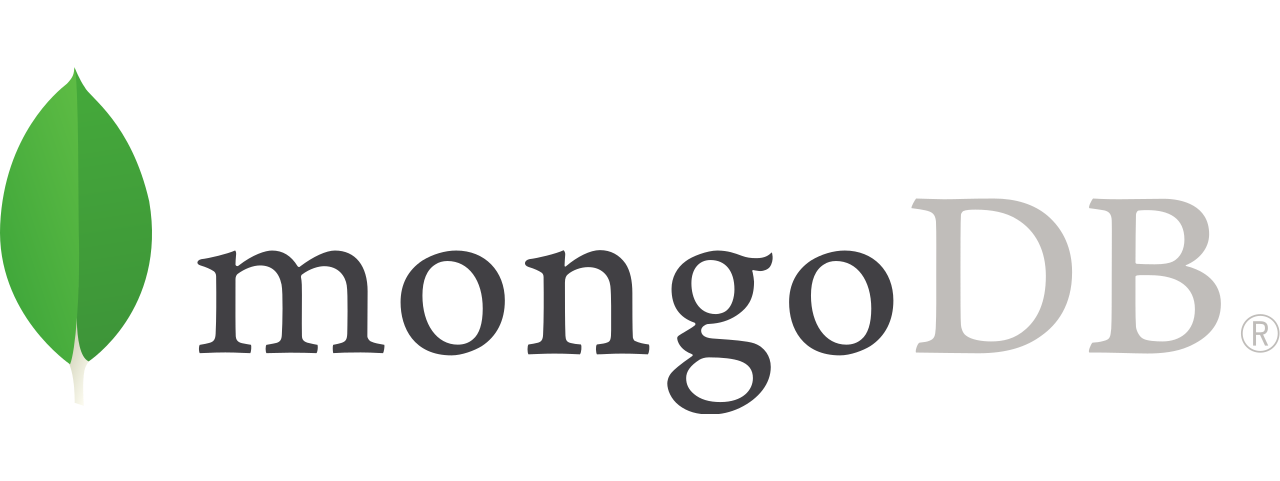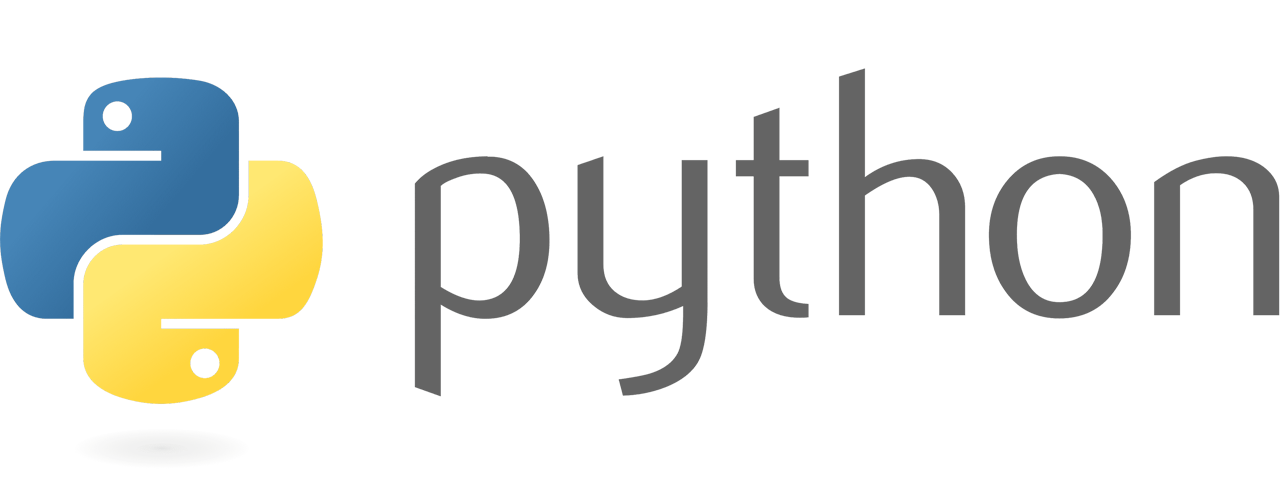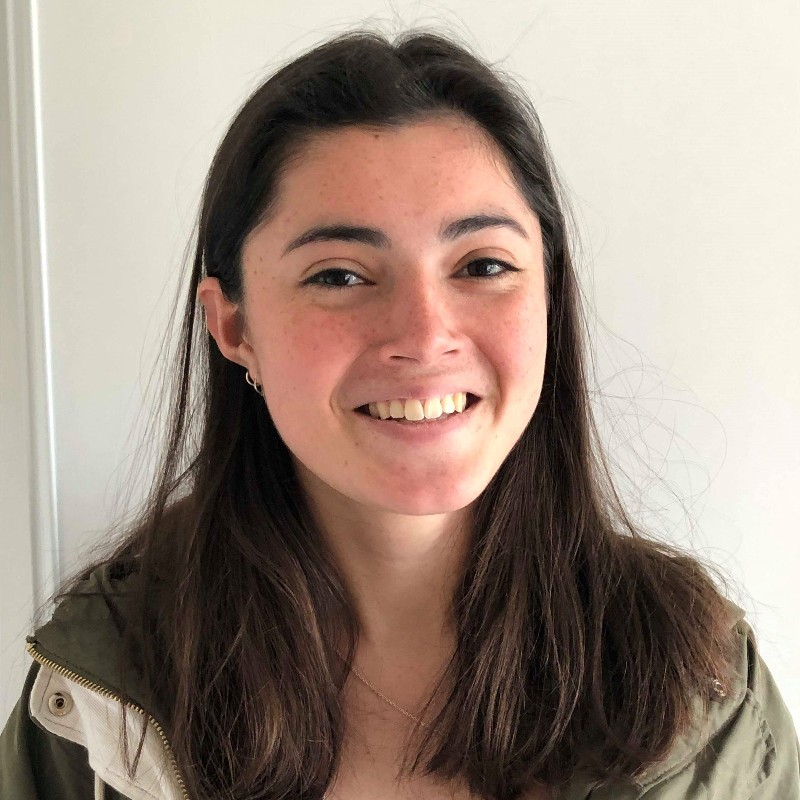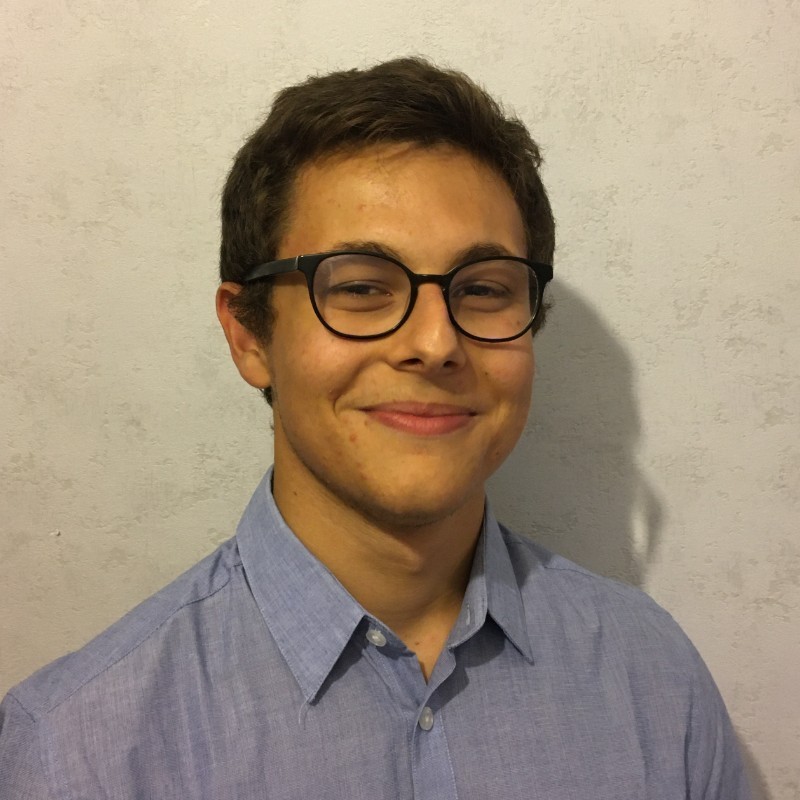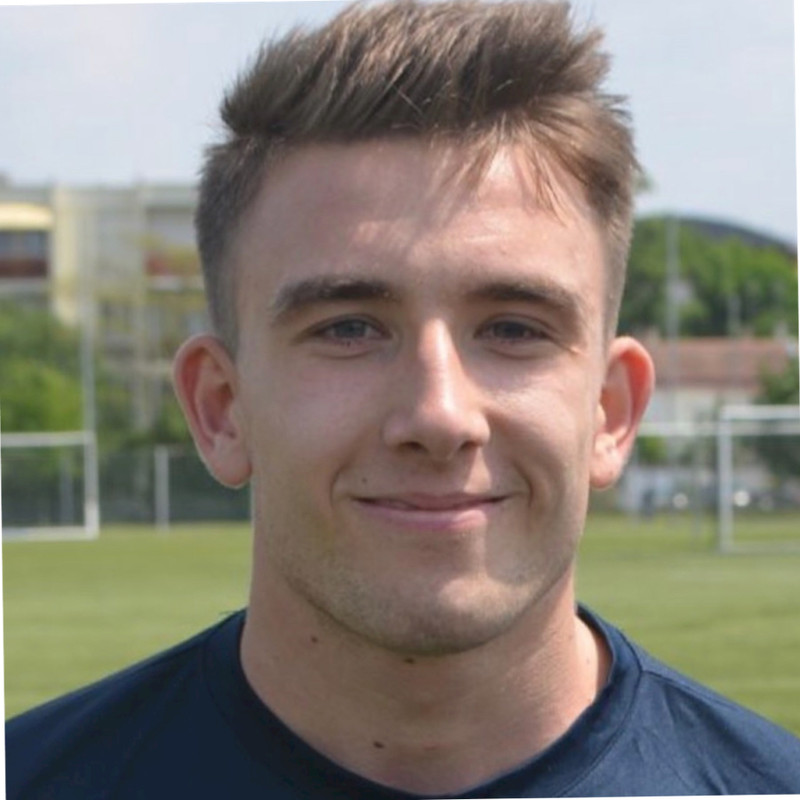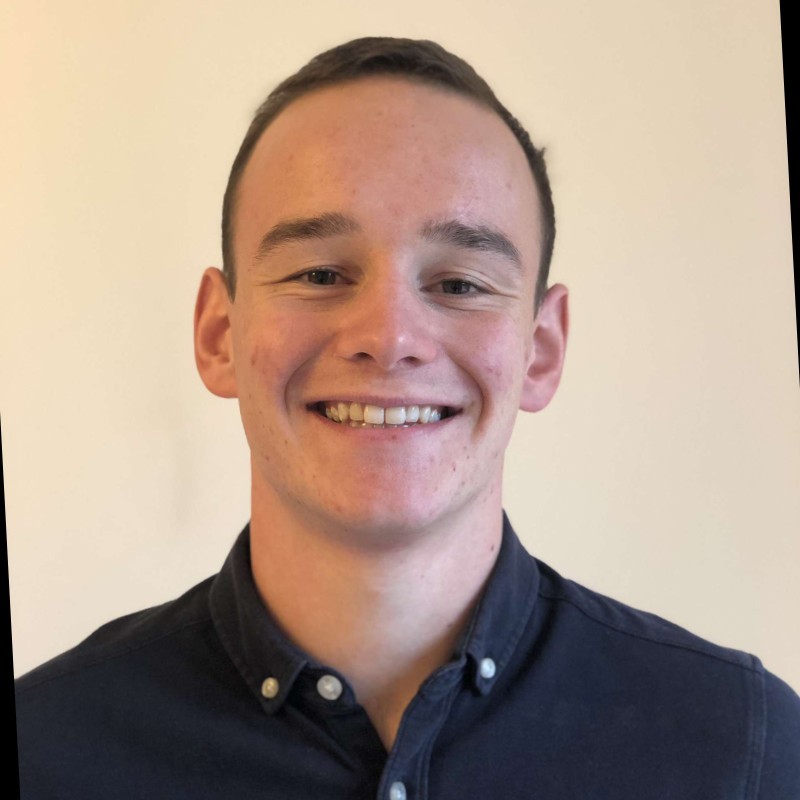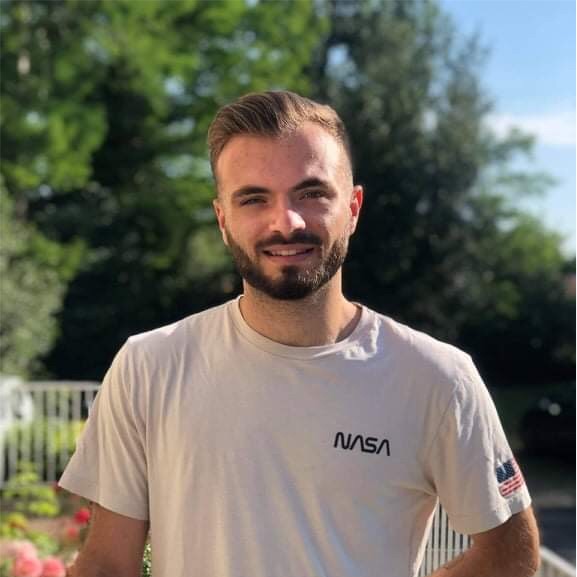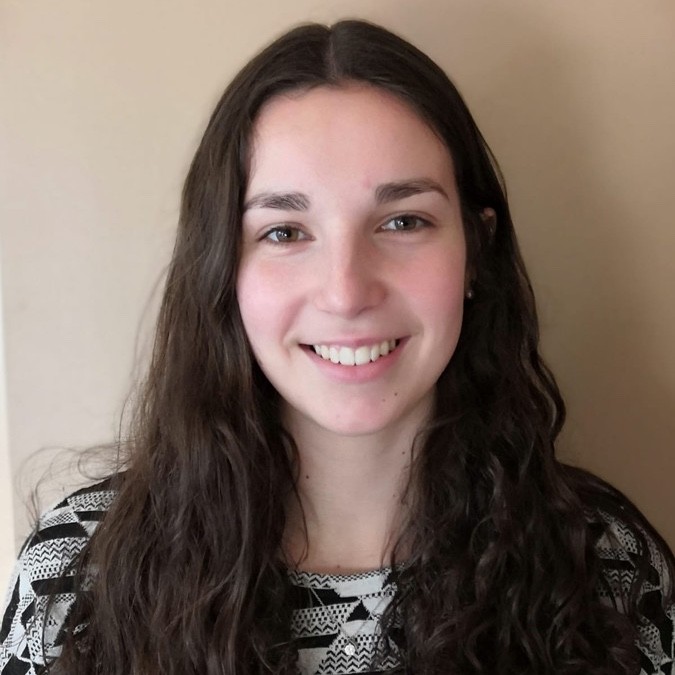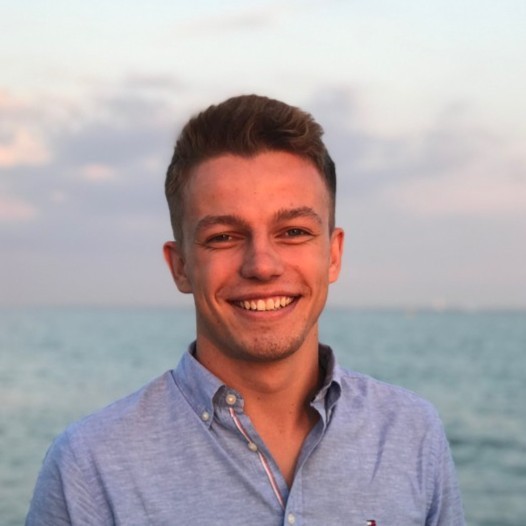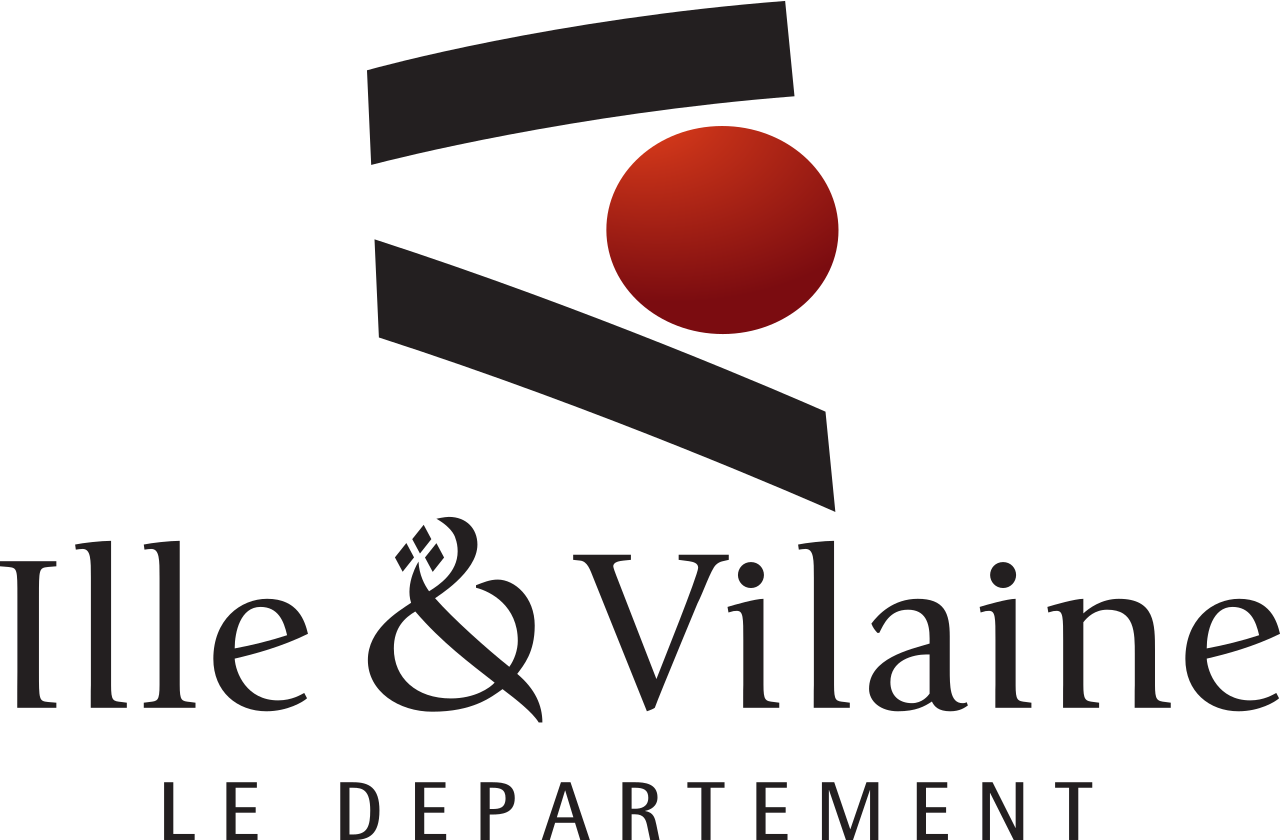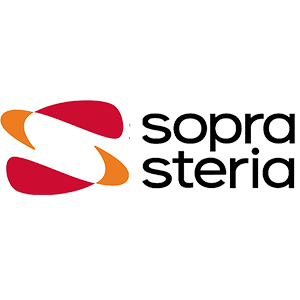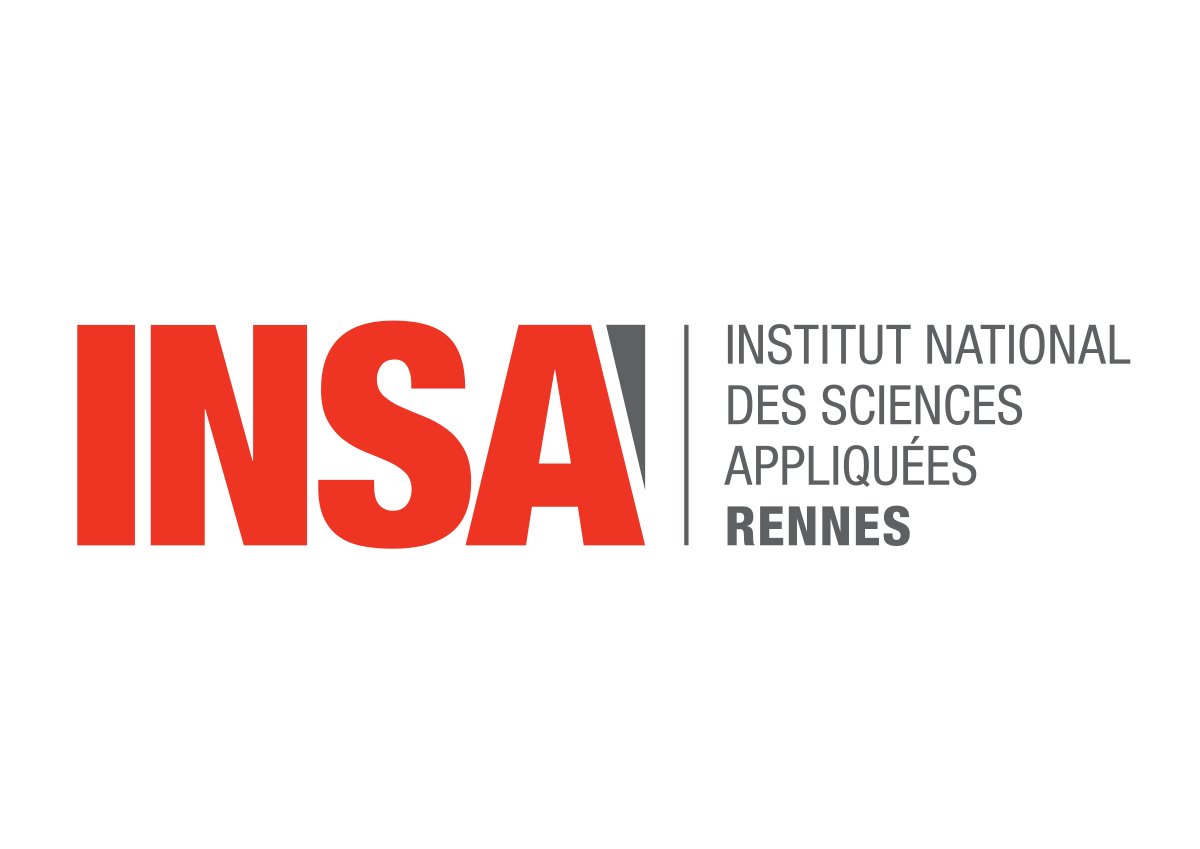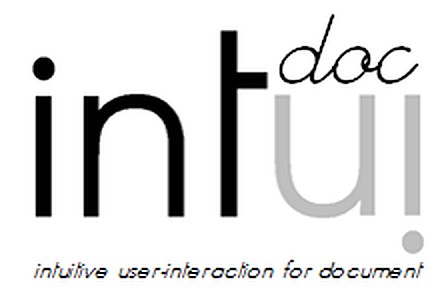

Presentation
Handwritten documents, especially from archives, are full of valuable data, but need to be digitized to facilitate their use.
Artificial intelligences can be used to achieve this, but they require large learning bases to train and improve their results.
Thus, Taliesin, a web application born of a desire to facilitate the transcription of these handwritten documents into digital ones,
allows the generation of learning bases to train these artificial intelligences in handwriting recognition.
Taliesin, through an easy-to-use ergonomic interface, allows the transcription paragraph by paragraph, sentence by sentence or word by word of any handwritten document.
Composed of several artificial intelligence algorithms, the application merges their results to obtain a unique and accurate transcription.
Computer science project of the fourth-year students of INSA Rennes



